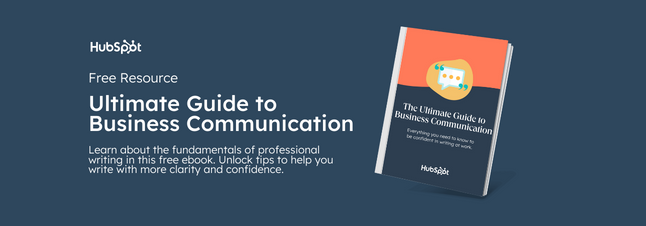I.e. vs. E.g.
I.e. and e.g. are abbreviations for Latin terms. While similar, they are not interchangeable. I.e. stands for id est or 'that is' — and is used to clarify the statement before it. E.g. means exempli gratia or 'for example.' It's used to introduce examples and illustrate a statement.
Both i.e. and e.g. are abbreviations for Latin expressions. While their usage is similar, they are used differently in sentences.
What does i.e. mean?
I.e. originates from the Latin id est, which stands for "that is" or "in other words." It clarifies or elaborates on the subject that comes before it. You can remember how to use i.e. by thinking of the I in "in other words."
Here's how you would use i.e. in a sentence:
"Our presentation is due by 5:00 p.m. on Friday — i.e., we need to get our edits in no later than 4:00 p.m. on Thursday."
What does e.g. mean?
E.g. comes from the Latin exempli gratia, which means "for example." It introduces one or more examples to support the sentence before it. When in doubt, think of the E in "for example."
Here's how you would use e.g. in a sentence:
"If you're going to be offline, please update your Slack status. E.g., I set my Slack status to 'Walking the pups' for an hour every day to let people know I'm away from my desk."
How to Use I.e. and E.g. (with Examples)

Now that we know what i.e. and e.g. mean, let's look at how to use them. Here are a few things to remember:
- Place a period after each letter in the abbreviation (i.e. and e.g.).
- Capitalize the first letter if they’re at the beginning of a sentence (I.e. and E.g.).
- I.e. and e.g. don’t need to be italicized.
- Add a comma when they're in the middle of a sentence or within parentheses (i.e., like this).
Here's what i.e. looks like in action:
Hi Nicole,
It was a pleasure meeting with you today. I’ll review the slides you sent for the sales team presentation and provide feedback shortly — i.e., one to two business days.
Thank you,
Ella

In this example, i.e. specifies the amount of time "shortly" refers to (one to two business days).
Now, we’ll take a look at how to use e.g. in a sentence:
Hi Becca,
Thanks for exploring a potential partnership with me today. I've attached additional documents (e.g., resource #1, resource #2, and resource #3) providing more information about our premium plan pricing and its benefits.
I look forward to discussing these resources in our next meeting on September 20th. Please let me know if you have any questions in the meantime.
Best,
Kelsey

Here, e.g. is used to list examples of information the sender of the email is providing to the prospect. It gives the recipient a clearer idea of what to expect in the attachments.
Not sure if you’ve used the correct abbreviation? Here’s a fun trick: double-check your sentence and substitute the English phrase for the abbreviation. The examples below show what this looks like:
- "I'll get back to you shortly — in other words, one to two business days"
- "I've attached additional documents (for example, resource #1, resource #2, and resource #3) providing more information about our premium pricing plan and its benefits."
Once your sentence sounds correct, add the abbreviation in again. Now you're all set to send your email, memo, or Tweet to the masses.
Sales Communication

.jpg)



![Active Listening Techniques To Use On Your Next Sales Call [+ Examples]](https://53.fs1.hubspotusercontent-na1.net/hubfs/53/active-listening-1-20250218-4164086.webp)
![How to Reply to a Sales Rejection Email From a Client [+ Templates]](https://53.fs1.hubspotusercontent-na1.net/hubfs/53/timing-objection-responses-1.jpg)




%20(1).png)

